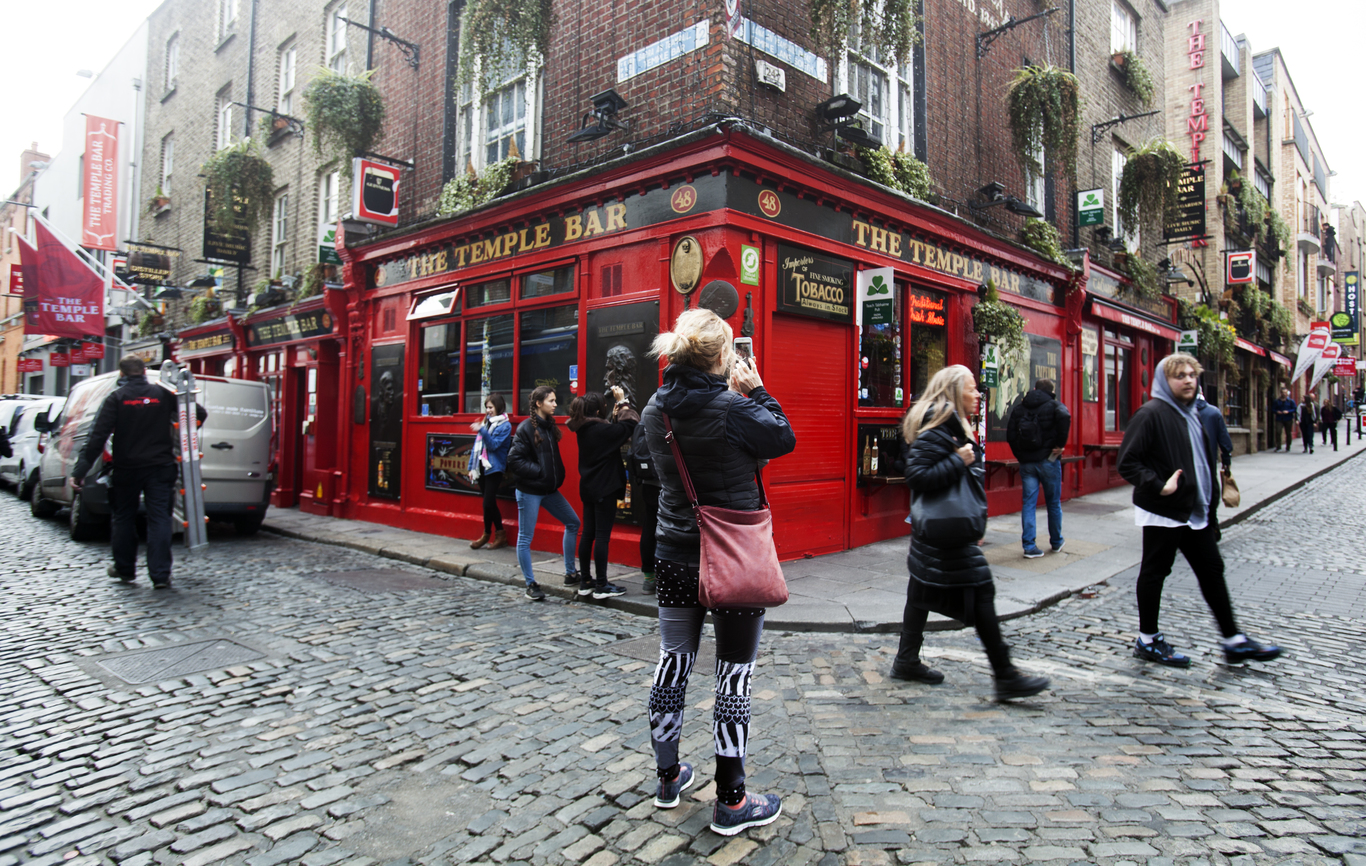Temple Bar branded 'an overpriced trap for drunk tourists' in restaurant's licence bid
Court hears the quieter west end of the tourist attraction is the ideal model for its central area.
THE CENTRAL AREA of Temple Bar was branded in court today as distinctively unattractive, and a tacky focal point for beggars and tourists with loud music blaring day and night.
Architect Garrett O’Neill, who was singing the praises of the quieter west end of Temple Bar where Barbara’s, a new licensed restaurant opens tomorrow, quoted website Smarter Travel as describing the central area as “the third most disappointing place in the world for tourists”.
O’Neill, of the well-known architects firm Cathal O’Neill & Associates, stated in a report to the Circuit Licensing Court that Smarter Travel had advised visitors to avoid Temple Bar “at all costs” and had described its bars as “overpriced tourist traps catering for visitors competing to see how drunk they can get”.
Circuit Court president, Justice Raymond Groarke, granted the Press Up Group a full drinks and restaurant licence for Barbara’s Restaurant in the old Dollard Printworks Building on the junction of Wellington Quay and East Essex Street.
Its next-door neighbour is the U2-owned Clarence Hotel, which used to share part of Dollard House for bedrooms.
Barrister Kerry Jane Morgan, who appeared for the Press Up Group with Maria Edgeworth of Leman Solicitors, told the court that the old print works had been first opened in 1887 and was a listed building due to the fact it was one of the first steel-constructed multi-storeyed properties in Ireland.
O’Neill, an expert in urban and building conservation who is currently working on the redesign of Temple Bar Square, had been called to give evidence as to the suitability of the new Barbara’s Restaurant for “the quieter end” of the Temple Bar west area which, he stated, draws very few of the crowds seen in the main area.
His report revealed that while in many ways a remarkable success on commercial, architectural and cultural levels, the Temple Bar development has not been without its problems.
“The area has become a nationally important tourist attraction accounting for a sixth of the entire tourist income of the State and being thronged with tourists from 10am until early next morning,” he said.
O’Neill said there were about 25 public houses and over 100 licences attached to restaurants, hotels and off-licences in the area. Many of the pubs were designed to appeal to tourists and had exaggerated themes and prices.
He said the target clientele of central Temple Bar was the high-spending, young, short-term visitor and the area had a reputation for hosting exuberant stag and hen parties.
The leading expert added that it could be said the area had been too successful because it had now reached the point where it was distinctively unattractive with few residents or native Dubliners choosing to socialise there because of the lack of relaxed, refined and quiet establishments.
Morgan told the court that restaurant and bar Roberta’s, situated in a much quieter area of Temple Bar, is the sort of establishment that will attract Irish people as well as tourists. The building would also house a high quality artisan food and beverage store.
O’Neill said it was hoped that some of the 2,000 residents of the area might come to regard the development as “their local”, an almost secret location where they could go for a quiet drink or light meal with their friends and neighbours away from the hustle and bustle of the tourists.





